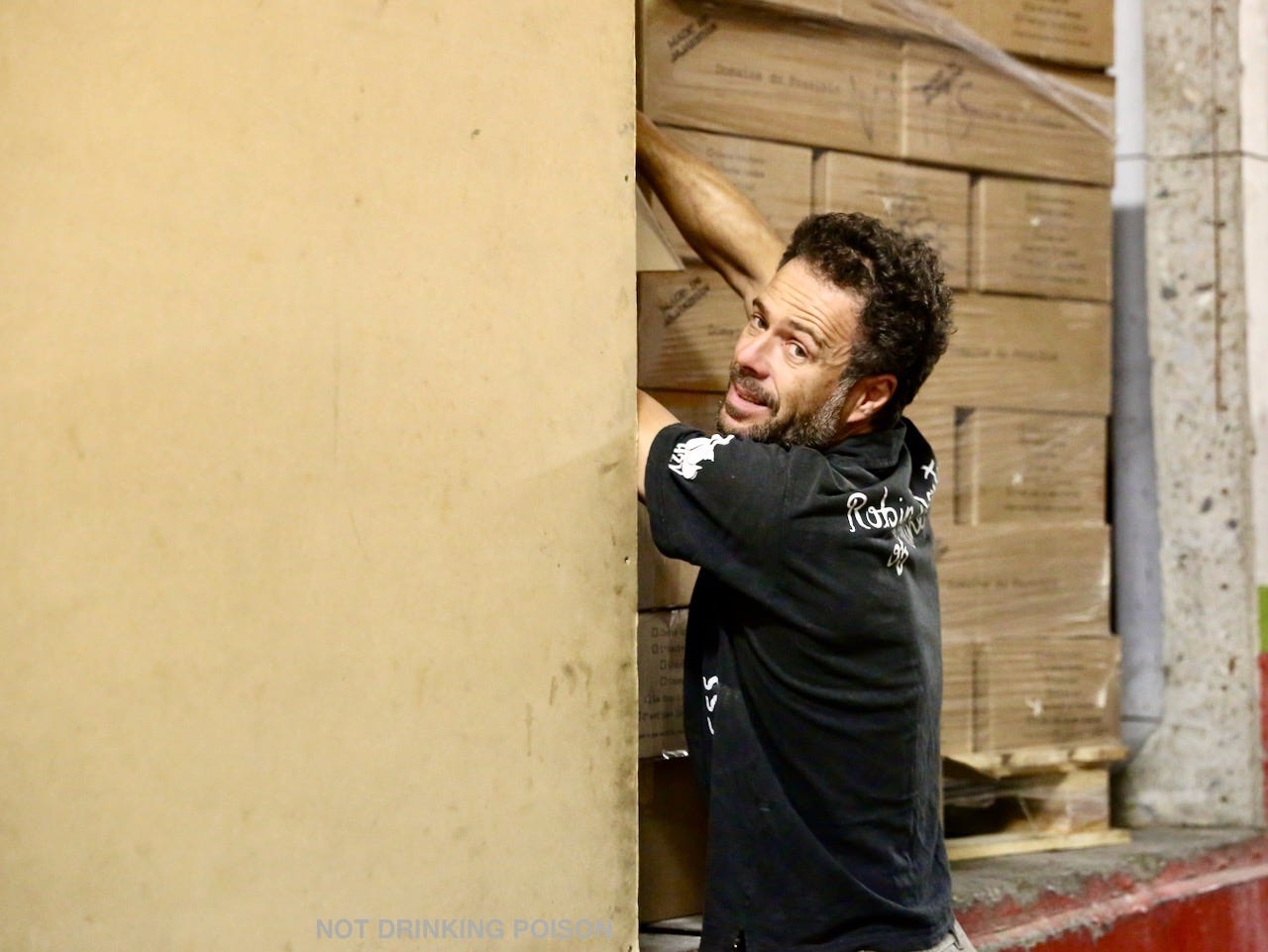The Ambassador from Jajakistan
An interview with Domaine du Possible's Loïc Roure, pioneering natural Roussillon vigneron and co-organizer of the La Bande de Latour salon series.

Originally from Saint Etienne, Loïc Roure founded his influential Roussillon estate Domaine du Possible in 2003, becoming a key figure in the first true “wave” of natural winemakers in the region, alongside peers like Jean-Louis Tribouley, Cyril Fhal, Tom Lubbe, Bruno Duchêne, Jean-François Nicq, and Edouard Laffitte.1 Roure and Laffitte share a converted cave cooperative cellar facility in Lansac, which they have affectionately dubbed “Jajakistan.”2
I first met Roure in the early 2010s in the context of Paris restaurateur Kevin Blackwell’s chaotic Amis Buvons tastings at the latter’s 9th arrondissement bistrot Autour d’Un Verre. Only little by little, over the years, did I come to appreciate Roure’s low-key humor and his vast journeyman experience in natural wine circles. Before establishing his Lansac estate in a former cave cooperative, he trained with Jean-Pierre Robinot (at Robinot’s erstwhile Paris wine bar L’Ange Vin), Thierry Allemand, Gérald Oustric, Gilles Azzoni, Olivier Cousin, Bruno Schueller, and Marcel Richaud. Roure’s own acolytes, meanwhile, include the Ardèche négociant maestro Daniel Sage.
I first visited Roure in 2019, when, as he puts it today, I found him at a crossroads, hesitating whether to expand or reduce the size of his estate, which then spanned 11ha. I caught up with Roure on the phone yesterday to learn more about La Bande de Latour, the early November salon he has co-organized throughout the last decade; the 2023 vintage in the Roussillon; and what the future holds for Domaine du Possible.
Quick Facts
Loïc Roure established his estate in Lansac in 2003, with 2.5ha at the time. Prior to embracing an interest in wine and winemaking, Roure had worked for Amnesty International managing solicitation of mail donations.
Grapes farmed include: carignan, grenache, syrah, mourvèdre, macabeu, carignan gris, grenache gris, and grenache blanc.
Roure favors cool semi-carbonic maceration on reds, practicing about 20% destemming, along with pigeage on the bottoms of tanks. In natural vinification, Roure is a pragmatist, generally eschewing sulfite addition without forswearing it entirely (additions in the range of 10mg/L for reds and 20mg/L for whites, before bottling). He’s forthcoming about the occasional reluctant use of yeast nutrients and micro-oxygenation during fermentation. He doesn’t use lysozymes. Wines are never fined or filtered.
Roure produces négociant wines under the label “En Attendant La Pluie.”
While 2022 was among Roure’s largest vintages, at 500HL of production, 2023 looks set to be significantly smaller, due to losses from hail. He estimates he’ll produce about 300HL of wine.
Roure is in the process of ceding much of his vineyard surface to others after this vintage. As of 2024, Roure will farm just 4ha, spread between plots in Cassagne and Rasiguères, along with smaller parcels in Caudiès and Latour-de-France.
LOÏC ROURE: AN INTERVIEW

The following interview was conducted on September 13th, 2023. It has been condensed and edited for clarity.


